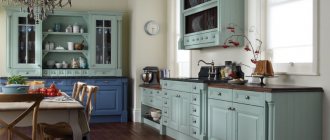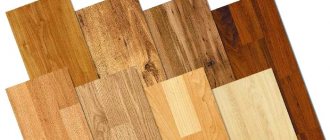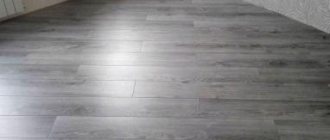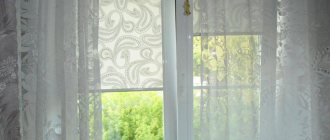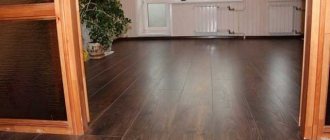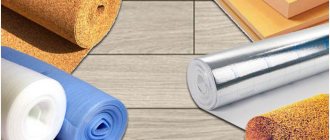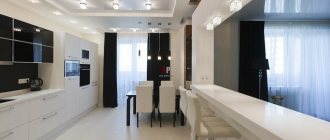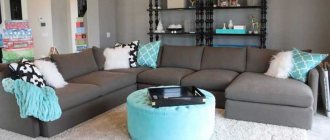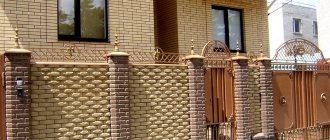Why does laminate flooring squeak?
If the laminate crunches and creaks, look for the reason in one or several factors at once:
- an initially low-quality laminate with unusable locks and crooked geometry was purchased;
- climatic conditions of use are violated;
- installation technology is not followed;
- the floor has not been leveled;
- no technical gaps are left;
- the substrate is too thick;
- dust and debris were removed incorrectly during installation;
- changes in temperature and humidity occur.
How to remove a squeak without analysis?
Why does laminate flooring squeak, how can I fix this problem without dismantling it? If the reason does not lie in serious violations of the installation technology, perhaps simpler, quicker methods will help you.
- Paraffin candle. Melt it, pour wax in those places where the sound is heard. If gaps have formed between the seams, the candle can act as a sealant. Treatment with a soft spatula will close them and protect them from water and debris.
- Polyurethane foam. Helps with sagging floorboards. Put on the nozzle, shake the can, pour foam under the boards in the place where it creaks. Wait for it to dry completely, remove any residue from the surface with a special solution. This method is quite simple, but not very effective - everything will be fine until the foam subsides. And this will happen very quickly.
- PVA glue. Used as a foam substitute. Drill a 0.5 mm hole (one or more) in the place of the unpleasant sound, remove any debris, and use a syringe to pour glue into the hole. Do not step on this place until it dries completely; it should stop creaking.
- Oil. The life hack is exactly the same as with PVA glue - drill the floor, fill it with a syringe. Lubricating boards works great on thresholds and other places with constant load.
The photo shows colored wax that can be used to seal drilled holes.
The best ways to eliminate squeaking
If the root of the evil lies in poor quality materials or poor installation technology, most likely the floor will have to be dismantled and reinstalled. But don't rush into this decision!
Dismantling is not the only way to eliminate creaking laminate flooring. Understanding the cause of unpleasant sounds will further help determine the simplest, inexpensive option for getting rid of it.
Getting rid of squeaks due to uneven floors
Poor preparation of the base will lead to one result: the laminate creaks. Any pits or bulges appear when walking and spoil the geometry of the laminate floor.
Unfortunately, to correct an uneven base, you will have to disassemble the floor. How much depends on the scale of the problem.
If the laminate creaks in one place, take it apart, cement the depression or grind off the bump, let it dry, and put the boards in place.
If the sound is throughout the entire floor, it is necessary to dismantle the floor covering, level it - it is best to use the self-leveling method, lay the underlay, and lay the planks again.
Important: Crooked lamellas cannot be returned to their place; they require replacement with new ones.
Watch the video to find out why you can’t lay laminate flooring on an uneven base.
What to do if the laminate creaks due to a temperature gap?
When the laminate creaks not constantly, but with changes in the temperature or humidity of the room, remove the baseboards and check the condition of the technical gaps.
Laminate boards tend to expand/contract with climate fluctuations. If, when laying the laminate, you do not leave enough space between the covering and the wall, or leave it insufficient, the planks will quickly hit the wall when they expand. The surface begins to creak and bulge in some places.
The photo shows one of the ways to leave gaps when laying laminate boards
When wondering why laminate flooring creaks, first of all check the climatic gap near the walls and pipes for compliance with the standards:
- the correct gap for most rooms is 1 cm;
- distance from the board to the pipe - 1.5 cm;
- the gap between the floor and walls in damp and large rooms is 1.5 cm.
If this is the cause of the laminate squeaking, the solution will not require dismantling. Craftsmen advise eliminating this problem by cutting the boards to the required width around the perimeter of the room. At long distances, a grinder or jigsaw will help - cut off carefully so as not to damage the wall and floor. And around the pipes, cut off the laminate with a sharp knife.
Removing the creaking of laminate locks
Tension in the locks is another cause of squeaking. If this is the problem, then an unpleasant sound will appear almost immediately after installation. This is due to the fact that the floor covering adapts to the surface of the base, traffic, and room climate.
The photo shows an example of a laminate floor. After installation, 2-3 months must pass for the slats to take their final shape and stop creaking.
When the floor settles down and takes its final shape, the creaking will stop on its own. As a rule, this takes up to 3 months. If this does not happen, first of all check the presence and size of climatic gaps, following the instructions from the previous paragraph.
How to remove laminate flooring from squeaking due to remaining debris?
If laminate flooring squeaks when you walk, sand and other small debris may be the cause. Dust does not arise on its own, but remains after hasty installation - without thorough cleaning before, during, or after installation.
A loud crunch will indicate that sand has gotten into the locks of the laminate floor. Do not delay repairing the coating: small debris can lead not only to extraneous sounds, but also to damage to the locking connections.
As a rule, it is not possible to remove the squeaking of laminate flooring without disassembling it - you will have to remove the lamellas, remove the backing, clean the base of debris, and put on new lamellas. To avoid confusion when reinstalling, number each part before disassembling.
The photo shows a construction vacuum cleaner that will make it easier to clean the screed from debris and dust
A crumbling screed can also lead to dirt accumulation and squeaking in the laminate flooring. To correct the mistake, the coating is dismantled to the place where it creaks, filled with cement, leveled, dried well, and primed. If you are not sure that you can handle it, call a specialist for a beacon screed.
Proceed with installation after complete drying. Thoroughly clean the base before you begin, and go over each strip with a vacuum cleaner during the process.
How to fix squeaky laminate if the backing is too soft?
The underlay is the most important layer of the finished floor. It smooths out small unevenness, protects the laminate floor from water and moisture, dampens noise, and insulates sound and heat. But bigger doesn't mean better. You should not try to solve the shortcomings of the screed by making a flat floor with a thicker gasket. A substrate that is too thick will settle, the laminate on it will begin to sag, its locks will fail, and it will certainly begin to creak.
The photo shows a thin cork backing for laminated panels
The optimal thickness depends on many factors. Including the type of laminate, operating conditions and substrate material. Most often, the manufacturer indicates the most suitable option on the packaging with panels.
Dependence of thickness on material:
- cork - 2-4 mm;
- coniferous - 4 mm;
- foamed - 2-3 mm.
Dependence of thickness on laminate:
- standard 8 mm panels - 2-3 mm;
- thin 6-7 mm - 2 mm;
- thick 9-11 mm - 3-5 mm.
How to eliminate laminate flooring squeaking due to the underlay? Change! It will be necessary to completely dismantle the covering, replace the old gasket with a new one and re-install the lamellas.
Why does laminate flooring squeak when you walk after installation?
Having familiarized yourself with the main causes and ways to eliminate squeaking laminate flooring, you can solve the problem that has arisen in a short time and without disassembling the floor.
Violations during preparatory activities
If the base under the floor covering is uneven and poorly prepared, then undesirable consequences in the form of an unpleasant squeak will occur. A clear sign of non-compliance with the rules for preparing the base will be noise not over the entire surface, but only in certain places, locally. In such areas there are irregularities; under load, the laminate bends, which causes a creaking sound.
Using a level you can immediately identify floor unevenness
Thick backing
Laminate floors can creak when using the wrong thickness of polyurethane foam sheets - the backing. The main purpose of the canvas is to correct minor floor defects, thanks to sufficient shock-absorbing properties and compressive strength. If a cheaper fabric was chosen - polyethylene foam, which is too soft for these purposes, the likelihood of extraneous sounds is very high. In this case, the laminate locks begin to bend under the weight of a person.
Important! To prevent the laminate from squeaking when walking, it is necessary to use a backing up to 3 mm thick.
Thick backing creates squeaking noise when walking on laminate flooring
Incorrectly selected gap between the laminate and the wall
To avoid negative consequences during the installation process, it is necessary to leave a gap between the floor covering and the wall. Its size is directly influenced by the total area of the room: the larger the parameters, the larger the gap between the laminate and the wall should be. The main thing here when choosing a plinth is to take this size into account; the gap needs to be completely hidden.
The minimum gap size is 7 mm
If all the rules regarding the gap between the laminate and the wall are observed, there will be no excessive load on the joint locks, therefore, creaking of the floor is eliminated. This compensation space allows the boards to move apart under tension. Otherwise, a small gap limits the floor covering; there is not enough room for it to expand, and as a result, the lamella is pressed into both the wall and the baseboard. Loud unpleasant sounds will also occur when laying the laminate back to back; there will be no necessary gap between the wall and it.
Changes in indoor humidity levels
Laminate flooring in an apartment often begins to creak in conditions of high air humidity. This flooring option quickly responds to changes in humidity, and sounds appear not in individual places, but across the entire surface of the floor. It is possible to eliminate laminate squeaking only by normalizing the humidity levels in the room.
Laminate is afraid of excessive humidity, it swells
Presence of debris under the coating
One of the reasons for laminate flooring squeaking is debris left at the preparatory stage. Extraneous sounds are created by particles of sand, dust, remnants of screed, and shavings formed after cutting the lamellas. When laying flooring, it is important not only to adhere to the installation technology, but also to use clean material and tools for the work. In this case, the presence of a vacuum cleaner is mandatory; it perfectly cleans the base of dust, sand and sawdust.
The base must be perfectly level and clean
To avoid debris getting on the locking part of the laminate, the panel should be cut to fit the specific dimensions of the laminate in another room. This simple approach will significantly simplify floor cleaning and ensure high-quality installation of lamellas. Even the smallest particles of dirt and debris getting into the connecting lock of the laminate can soon lead to damage to the original material.
To achieve a perfectly flat surface, a screed is used, but after some time under load (heavy furniture) it begins to crumble. It turns out that when you walk, the laminated flooring rests against the base and grinds these fragments, creating a crunching, creaking noise underfoot.
Low quality laminate installation
If the material was purchased from little-known manufacturers, relatively inexpensive, then after installation there is no guarantee that the desired result will be obtained. Even if all installation rules are followed and the optimal thickness of the substrate is used.
Only high-quality coating guarantees the elimination of defects in the future
Tension in the lock part
New laminate flooring may creak (in the first six months) due to tension remaining in the locking elements. Don’t worry - this is normal for high-quality flooring; the optimal position is independently searched for. This floating state of the laminate is explained by its “desire” to adapt to the base of the floor, the shape of the room, and the microclimate.
The floor covering must adapt to the conditions of use
Important! The duration of the adaptation period for laminate is 2-3 months. During this period, the stress level in the locking part of the panels will be reduced to a minimum, but the main thing is that there is enough free space between the lamellas and the wall.
For the natural expansion of the floor covering, you need furniture that is not too bulky, otherwise an unpleasant squeak is guaranteed. Interior items should be chosen in a somewhat lightweight design.
How to avoid squeaking?
The surest option on how to remove laminate floor squeaking is to initially do everything to avoid it. To do this, you need to know the intricacies of laying this coating and follow the rules.
- Do not use laminate immediately after purchase. Like linoleum, it needs to rest in the room where it will be laid. Simply leave the boards horizontal for 24 hours in summer and 48 hours in winter at room temperature. When they take their final shape, they are ready for installation.
- Buy high quality laminated parquet. Saving on materials can result in many problems: from creaking and crunching to deformation and swelling. More expensive laminate will last much longer without complaints.
- Prepare the base thoroughly. The self-leveling floor or cement screed must be perfectly leveled, smooth, and durable. If the surface crumbles, you will definitely hear a crunch under your feet. And unevenness and defects will manifest themselves as sagging and swelling of the boards.
The photo shows an example of high-quality installation: a perfectly smooth and clean concrete floor, the correct thin backing
- Choose the right substrate. The most wear-resistant option is cork. It will not bend under the pressure of furniture even after several years, but is not suitable for use in damp rooms. The most profitable one is foam, but it can become deformed and become thinner. Eco-friendly pine bark is often too thick, so it is only suitable for compacted laminate. The optimal thickness of the substrate for use in an apartment is 3 mm.
- Keep it clean. Clean the area before laying the underlayment and before installing the panels. During installation, keep a vacuum cleaner handy and remove dust as often as possible. If possible, cut in a separate room.
- Leave temperature gaps. We have already mentioned the ideal distance between the wall and the boards - 1 cm. At high levels of humidity and temperature, increase it by 50 mm. In large rooms, they also leave gaps between the boards themselves, covering them with decorative strips.
Before you start working, study not only the rules, but also take into account the mistakes of others:
Preventing a problem from occurring is much easier than getting rid of squeaks after installation. But if you are faced with the problem of extraneous sounds, do not delay the solution. Time can only worsen the situation and increase the cost of correcting errors.
How to fix creaking laminate flooring without disassembling it
It happens that even after all preventive measures have been taken, including filing down the expansion joint, leveling the size of the gaps at the joint, especially at the ends of the lamellas, and eliminating places with hanging edges does not give the required result. This happens with laminate flooring that has lasted at least 3-5 years. This is a problem not only with laminate; strong squeaking can be produced by wooden block parquet and mosaic sets of sections. The reason for this phenomenon remains the drying out and deformation of the locks; in other words, the joints wear out and play appears. The protective coating gradually wears off, moisture absorption increases, and, as a result, the lock begins to squeak.
If the laminate has an insert (blue), then you can’t do without lubricant
There are three ways to eliminate creaking sounds:
- Use silicone oil to treat rubber seals on car windows and metal-plastic windows;
- Using defrosting mixture VD-40. It is not intended for use on wood, but can be used as a temporary measure to eliminate squeaking;
- Use homemade powder lubricant for wooden products.
It is clear that each of the above materials has a certain degree of effectiveness. If you need to remove the squeak immediately, then perhaps silicone in an aerosol will be the best solution. In other cases, it is advisable to experiment with materials.
WD-40 aerosol is a mixture of alcohol and camphor oil, so you need to be extremely careful when applying the material to the joint. It will be incredibly difficult to wash off drops and marks after treatment, so you can first stick some tape on. The technology for combating laminate squeaking is shown in the video:
Treatment with silicone anti-squeak grease for laminate looks much more interesting. This is a fairly viscous material, so it is better to apply it in small portions using a knife blade or spatula. There is no point in spraying with an aerosol, as this can ruin the laminate flooring.
The candle must be wax
You can also get rid of squeaking using the smallest powder, rubbed from a frozen wax candle; you can buy them in a church shop or in a store, the main thing is that the material is soft and plastic at room temperature. The rubbed dust is carefully poured into the seams, the surface is wiped with a brush to remove residues, and heated with an industrial hair dryer at a temperature of no more than 80°C.
The powder melts and spreads inside the lock, as a result of which the creaking disappears for a long time. A kind of solid lubricating film is formed inside the joint, which does not dry out or be absorbed by the lamella material.
